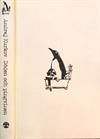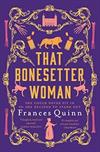
Alamut
by Vladimir Bartol | Literature & Fiction | This book has not been rated.
ISBN: 1556436815 Global Overview for this book
ISBN: 1556436815 Global Overview for this book
2 journalers for this copy...
First published 1938. Translated by Michael Biggins.
The Slovenian writer Vladimir Bartol languished out of print and unpublished for many years. A man so much of his time as to transcend his time, he was savagely censored in the Soviet era. Yet Alamut, his masterpiece, is one of those rich works that acquires new meaning as it journeys into its futurity: what was, in part, a satire on the rising fascist movements that would envelop its author only a year after publication acquires new and deeper levels in a world of militant Islam.
Alamut reimagines the story of the eleventh-century Ismaili leader Hasan ibn Sabbah, the “Old Man of the Mountain” who created the original assassins — elite suicide attackers motivated by religious passion and a carefully nurtured vision of the paradise that awaited them. Set in Alamut, Sabbah’s hilltop fortress, and seen primarily through the eyes of the young slave girl Halima and the elite, if naïve, warrior Ibn Tahir, the narrative raises potent questions about faith, belief, rhetoric, and the nature and purpose of power.
Yet there is much, much more to this novel than politics and religion. The life of the girls and ageing women in the initially idyllic harem are explored; the moral complexities at the heart of Sabbah’s ascent to power are painfully exposed; the contrasting landscape of medieval Iran and the savage beauty of isolated Alamut are intensely imagined. The whole, despite the occasional longueur, still has the power to shock, to move, and to provoke. — Theodora Sutcliffe in 1001 Books You Must Read Before You Die
The Slovenian writer Vladimir Bartol languished out of print and unpublished for many years. A man so much of his time as to transcend his time, he was savagely censored in the Soviet era. Yet Alamut, his masterpiece, is one of those rich works that acquires new meaning as it journeys into its futurity: what was, in part, a satire on the rising fascist movements that would envelop its author only a year after publication acquires new and deeper levels in a world of militant Islam.
Alamut reimagines the story of the eleventh-century Ismaili leader Hasan ibn Sabbah, the “Old Man of the Mountain” who created the original assassins — elite suicide attackers motivated by religious passion and a carefully nurtured vision of the paradise that awaited them. Set in Alamut, Sabbah’s hilltop fortress, and seen primarily through the eyes of the young slave girl Halima and the elite, if naïve, warrior Ibn Tahir, the narrative raises potent questions about faith, belief, rhetoric, and the nature and purpose of power.
Yet there is much, much more to this novel than politics and religion. The life of the girls and ageing women in the initially idyllic harem are explored; the moral complexities at the heart of Sabbah’s ascent to power are painfully exposed; the contrasting landscape of medieval Iran and the savage beauty of isolated Alamut are intensely imagined. The whole, despite the occasional longueur, still has the power to shock, to move, and to provoke. — Theodora Sutcliffe in 1001 Books You Must Read Before You Die
Most of the promotional material for this historical novel has centered on claiming it as some sort of key to modern Islamic extremism, even calling it "training manual" for al-Qaeda! No way -- these thousand-year-old events are about as relevant to the current century as the 11th-century Investiture Controversy is to understanding the relationship between the Catholic Church and modern European governments. Rather, like in many historical novels, the depiction of that time period serves as a case study and framework for more general ideas. Morality, religious belief, and the limits of freedom and manipulation all get examined here, but these are things that humans are bound to debate over and over, and different times shed different light on them.
I will say that the book didn't start very promising. I don't think I would have gotten past the first three chapters if I hadn't been determined to finish and review it. I would have really missed something if I had stopped at that point, though. Sure, the blatant sexism of the plotline that follows the women in the story doesn't get better; but partway through we are introduced to Hasan Ibn Sabbah himself, the leader of Alamut, and the more the book focuses on him, the more interesting it gets. He is a profoundly ambiguous figure, definitely immoral but also a deep thinker, and worth listening to for the lingering, troubling ideas he raises.
I will say that the book didn't start very promising. I don't think I would have gotten past the first three chapters if I hadn't been determined to finish and review it. I would have really missed something if I had stopped at that point, though. Sure, the blatant sexism of the plotline that follows the women in the story doesn't get better; but partway through we are introduced to Hasan Ibn Sabbah himself, the leader of Alamut, and the more the book focuses on him, the more interesting it gets. He is a profoundly ambiguous figure, definitely immoral but also a deep thinker, and worth listening to for the lingering, troubling ideas he raises.
Thanks so much for your donation Vasha!
This book is now part of the 1001-library. If you want to take this book from the library but don't know how to proceed, please refer to the 1001-library bookshelf.
This book is now part of the 1001-library. If you want to take this book from the library but don't know how to proceed, please refer to the 1001-library bookshelf.












